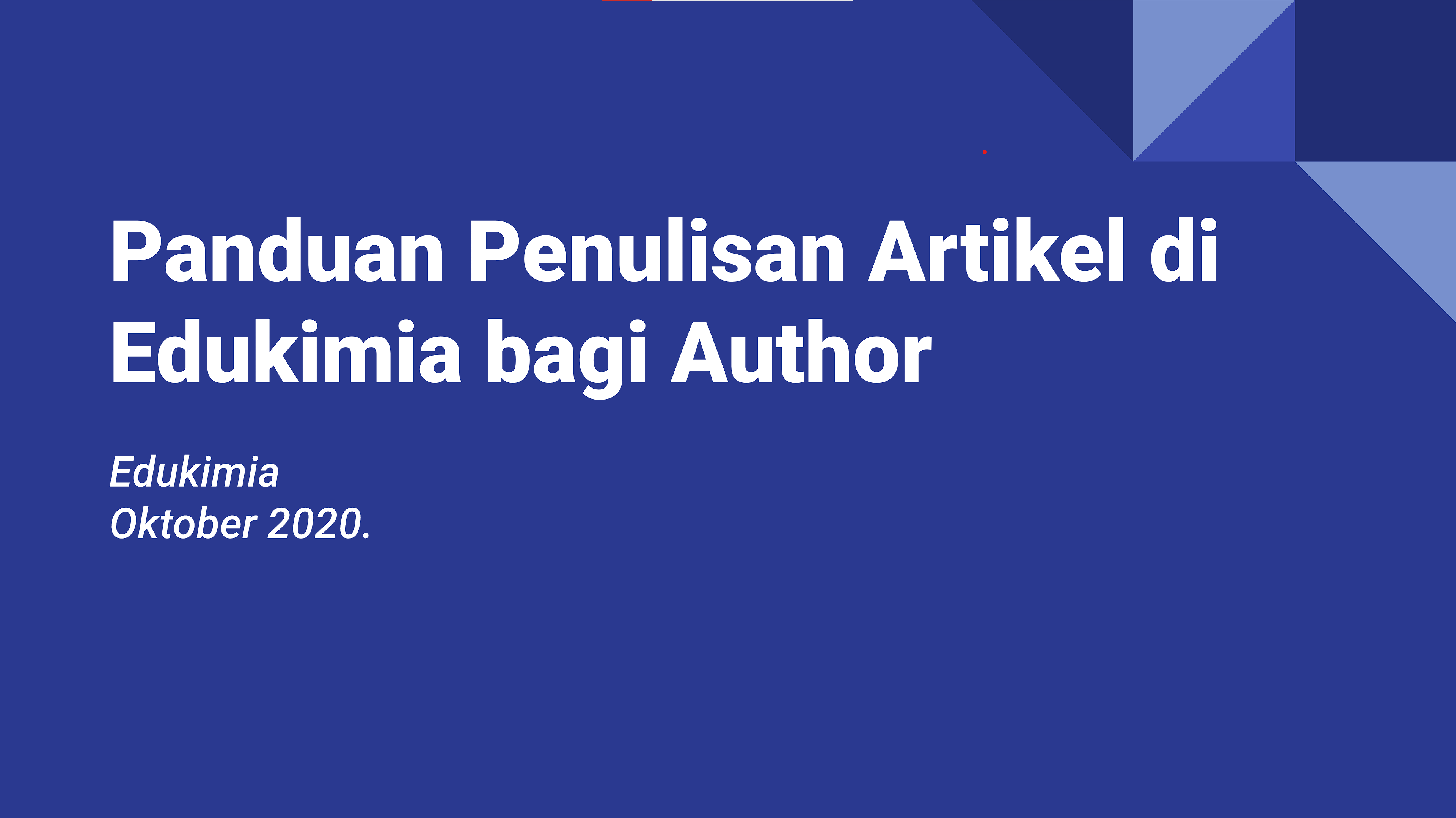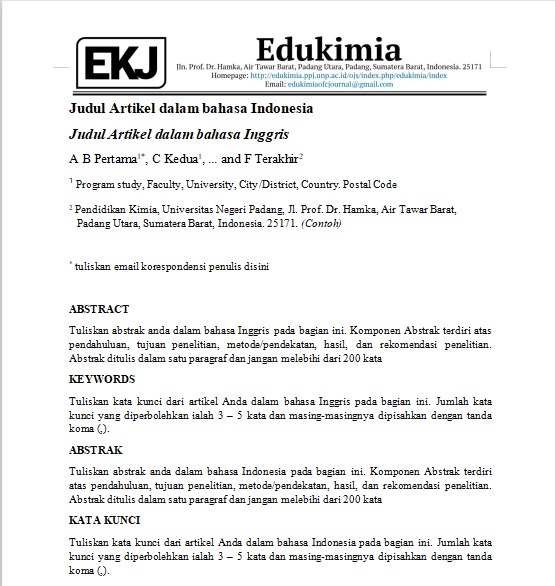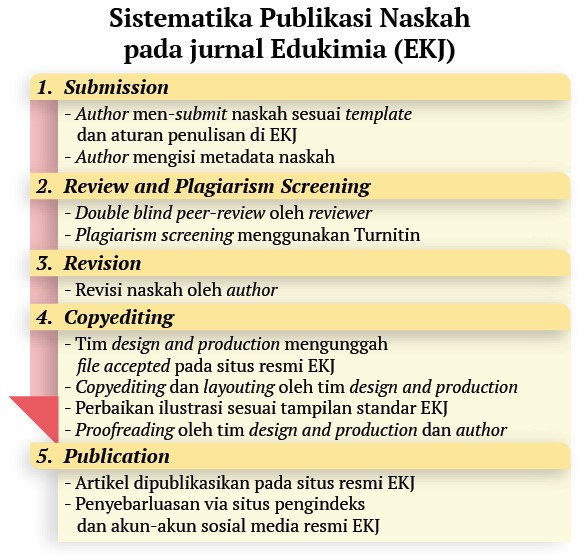Development of Structured Essay Diagnostic Test of Chemistry on Acid Base Titration Materials as an Instrument for Analysis of Student Learning Outcomes
Article Metrics
The abstract has been viewed for 338 times.The full pdf article has been downloaded for 261 times.
Abstract
Keywords
Full Text:
06_353 (Bahasa Indonesia)References
Fitriza Z, Aini FQ, Handayani P, Munira I. Development of structured essay diagnostic test of chemistry (SEDToC) to investigate senior high school student’s conception of buffer solution Student’s Conception of Buffer Solution. 3rd Int Semin Chem Educ. 2020;020012.
Sheppard K. High school students' understanding of titrations and related acid-base phenomena. 2006;7:32–45.
Astuti RT, Marzuki H. Analisis Kesulitan Pemahaman Konsep Pada Materi Titrasi Asam Basa Siswa Sma. Orbital J Pendidik Kim. 2018;1(1):22–7.
Supatmi S, Setiawan A, Rahmawati Y. Jakarta UN. Students’ misconceptions of acid-base titration assessments using a two - tier multiple-choice diagnostic test. African J Chem Educ. 2019;9(1).
Orwat K, Bernard P, Migdał-Mikuli A. Alternative conceptions of common salt hydrolysis among upper-secondaryschool students. J Balt Sci Educ. 2017;16(1):64–76.
Gurel DK, Eryilmaz A, McDermott LC. A review and comparison of diagnostic instruments to identify students’ misconceptions in science. Eurasia J Math Sci Technol Educ. 2015;11(5):989–1008.
Demircioǧlu G, Ayas A, Demircioǧlu H. Conceptual change achieved through a new teaching program on acids and bases. Chem Educ Res Pract. 2005;6(1):36–51.
Ilmah M. Miskonsepsi Siswa pada Materi Asam Basa dengan Menggunakan Instrumen Test Diagnostik Two-Tier. Universitas Islam Negeri Syarif Hidayatullah. 2017;
Kementerian Pendidikan dan Kebudayaan. Panduan Penilaian oleh Pendidik dan Satuan Pendidikan Sekolah Menengah Atas. 2017;
Rositari D, Saridewi N, Agung S. Pengembangan Tes Diagnostik Two-Tier Untuk Mendeteksi Miskonsepsi Siswa Sma Pada Topik Asam-Basa. Edusains. 2015;6(2):169–76.
Schmidt HJ. Students’ misconceptions - Looking for a pattern. Sci Educ. 1997;81(2):123–35.
Departemen Pendidikan Nasional. Tes Diagnostik. 2007;
Sugiyono. Metode Penelitian Kualitatif Kuantitatif dan R&D. Bandung: Alfabeta; 2016.
Jespersen ND, Brady JE. Chemistry: the Moleculer Nature of Matter. Wiley; 2012.
Silberberg M. Principle of General Chemistry, Second Edition. New York: McGraw-Hill; 2010.
Chang R. Chemistry 10th Edition. New York: McGraw-Hill; 2010.
Davis LL. Instrument review: Getting the most from a panel of experts. Appl Nurs Res. 1992;5(4):194–7.
Polit DF, Beck CT, Owen S V. Focus on research methods: Is the CVI an acceptable indicator of content validity? Appraisal and recommendations. Res Nurs Heal. 2007;30(4):459–67.
Sugiyono. Metode Penelitian Pendidikan Pendekatan Kuantitaif, Kualitatif dan R&D. Bandung: Alfabeta; 2011.
Dj L. Evaluasi Pendidikan. Padang: Universitas Negeri Padang; 2011.
Hamzah A. Evaluasi Pembelajaran Matematika. PT Raja Grafindo Persada.; 2014.
Refbacks
- There are currently no refbacks.

.jpg)















